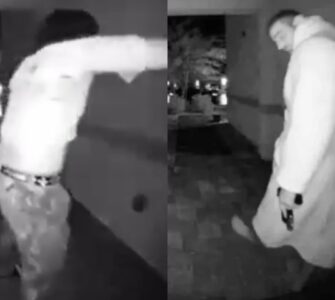If you love watching birds when you are out and about in nature, you may be wondering about the best binoculars for bird watching. Find out all about them here.
Did you know that the bird population has been estimated at approximately 300 billion individuals 10 years ago? This means that there are nearly 40 more birds for each individual person. How many of these birds have you seen? And when was the last time you used the best binoculars for bird watching?
You probably never paid attention to this subject, but some birds are truly amazing to look at. They have beautiful colors, a large beak, or a wingspan that terrifies you. Next time you go in the middle of nature, you should use the best binoculars to watch these birds.
Keep reading to find out how to find the best budget binoculars for bird watching and get the most for your money.
Set Your Price Range Right From the Start
The prices of binoculars can vary from under $100 to several hundred dollars or even a few thousand dollars. It’s important for you to set your budget right from the start, so you don’t spend too much. If this is your first pair, spending up to $500 might be the right thing to do until you become a more advanced bird watcher.
Most importantly, make sure that you shop from the right brands. Some companies have decades of experience in making optics for binoculars, telescopes, eyeglasses, rifle scopes, and more. For example, binoculars from Nikon, Zeiss, or Vortex are usually durable and accurate.
Decide Upon the Magnification Capabilities of Your Binoculars
The main job of your binoculars is to magnify the image coming from hundreds or thousands of yards away. Most binoculars can provide 8x magnification and this is usually ideal for bird watching. However, more sophisticated binoculars can provide 10x magnification or even more.
The higher the magnification number, the furthest away you can see. If this is the first time you’re going for bird watching, 8x magnification is usually enough. If you want to be able to see further away into the distance, 10x magnification is recommended. However, keep in mind that binoculars that offer the highest magnification also cost more money.
Pay Attention to the Field of View
Without getting into technical details, the field of view represents how much image comes into view when you’re looking at objects in the distance. A narrow field of view provides little details when it comes to the bird’s color, feathers, background scenery, etc. A wider field of view allows you to see more details even when the magnification level is set to maximum.
The field of view is usually represented as an angle (8 degrees or 9.5 degrees) or as a value such as 320 ft @ 1,000 yards. The higher these numbers, the more of an image gets into view and allows you to see more details.
When picking binoculars for bird watching, pay attention to the field of view values as well as magnification. If the field of view is higher, you can also track moving birds easier because you can see where they are going and move the binoculars accordingly.
Make Sure That Your Binoculars Come With Eye Relief
Eye relief refers to the distance between your eyes and the lenses of the binoculars. This is usually very small and it allows you to see the full field of view when watching birds in the sky. However, people who wear eyeglasses cannot get too close to the lenses of the binoculars.
That’s why you should look for binoculars that come with a feature called eye relief. This allows people who wear eyeglasses to get closer to optical lenses. As a rule of thumb, good binoculars provide eye relief of approximately 16mm.
You probably don’t wear eyeglasses, but maybe someone in your family does. Chances are that the binoculars will be used by all of your family members, so it’s a good idea to procure binoculars that also come with eye relief.
Go for Waterproof Binoculars If Possible
If you’re thinking about bird watching, you probably imagine yourself somewhere next to a river watching a colorful bird in a nearby tree. This is all nice and lovely until it starts raining. Since you have spent several hundred dollars on a pair of good binoculars, you want to protect them at all costs, right?
That’s why you should go for waterproof binoculars. These are made from more durable materials and include lens coatings that prevent rainwater to damage your binoculars. Even if it doesn’t start to rain, you never know how you might accidentally drop the binoculars in water. That’s when the waterproof materials can save the day.
Consider the Lens Diameter Which Should Be Around 42mm
The diameter of the lenses is very important. If it’s too large, the lens will become bulky, making the whole optical device too large in your pocket. If the lenses are too small, they don’t capture enough data, and they will make the whole bird watching experience less enjoyable.
Experts agree that lenses with a diameter of around 42mm are ideal. These lenses are sufficiently large to allow a lot of light to pass through, yet they remain relatively compact in size. Check the specifications of your next pair of binoculars and make sure they come with lenses with a diameter of 42mm.
Check Out the Warranty Policy Provided by the Manufacturer
You might be happy to find out that bird-watching binoculars are pretty solidly built. That’s why manufacturers usually offer a lifetime warranty on these products. Others offer a limited lifetime warranty which means that there are a few exceptions when it can become void.
Make sure that you get informed about these details before purchasing a pair of binoculars, especially if you’re thinking about paying several hundred dollars for them. If a manufacturer doesn’t offer a lifetime warranty, at least settle for a 5 or 10-year warranty period or buy from another brand.
Check the Strap or Chest Harness That Usually Comes With the Binoculars
Most binoculars are also shipped with a strap that allows you to wear them around your neck. Find out more details about this strap such as its dimensions, if it’s adjustable or not as well as the material from which is made.
Other binoculars come with a chest harness and a small purse that provides more protection for your optical device. Make sure that this harness is made from leather and that it fits comfortably around your neck.
It’s also possible to buy a chest harness separately, especially if you have bought an expensive pair of binoculars. Some harnesses enclose the binoculars completely, protecting them from dust, debris, and the elements of nature. Check out binoexpert.com to learn more about binoculars straps and how to buy such optical devices.
Test Multiple Models Before You Buy
Even if you plan to buy from the internet, make sure that you visit an optics store and test out a plethora of binoculars. Check out their magnification potential, how they fit in your hand, field of view, strap adjustability, etc.
Once you get a rough idea of what you should buy for bird watching, you should note down that model and get back home. Look online for that specific pair of binoculars from the same brand and see if you can find it at a discounted price.
When you test binoculars, it’s important to have a comfortable experience. For example, do the binoculars feel good on your hands? Do they feel very heavy around your neck? Can you enjoy the full field of view even while wearing glasses? These are the questions you should ask yourself when testing such optical devices.
Check Out the Image Quality and See If It Fits Your Preferences
A high-quality pair of binoculars should reproduce colors and details accurately, even at full magnification. When shopping for your first binoculars for bird-watching, analyze the image, and see if the colors shown are the same as the ones on the bird.
For example, some binoculars tend to darken the image at high magnification. Make sure that your next optical devices don’t do this. Also, is the image blurry at 8x magnification? What about 10x? If it is, this basically defies the purpose of having a high magnification range and you should look for a better pair of binoculars.
When it comes to details, can you see the individual feathers of a bird? What about its eyes? This depends a lot on how far away you are from the bird, but even an inexpensive pair of binoculars should provide decent details on the image.
Now You Know How to Buy the Best Binoculars for Bird Watching
The best binoculars for bird watching are the ones that fit your preferences, your budget, and sit comfortably around your neck. Especially if you like to “spy” on birds and other animals during your travels, it’s worth spending some time finding the best binoculars for the job.
For more pieces of advice on how to use binoculars, how to adjust their settings, and protect them against the elements, make sure that you check out the other articles on our website.



















